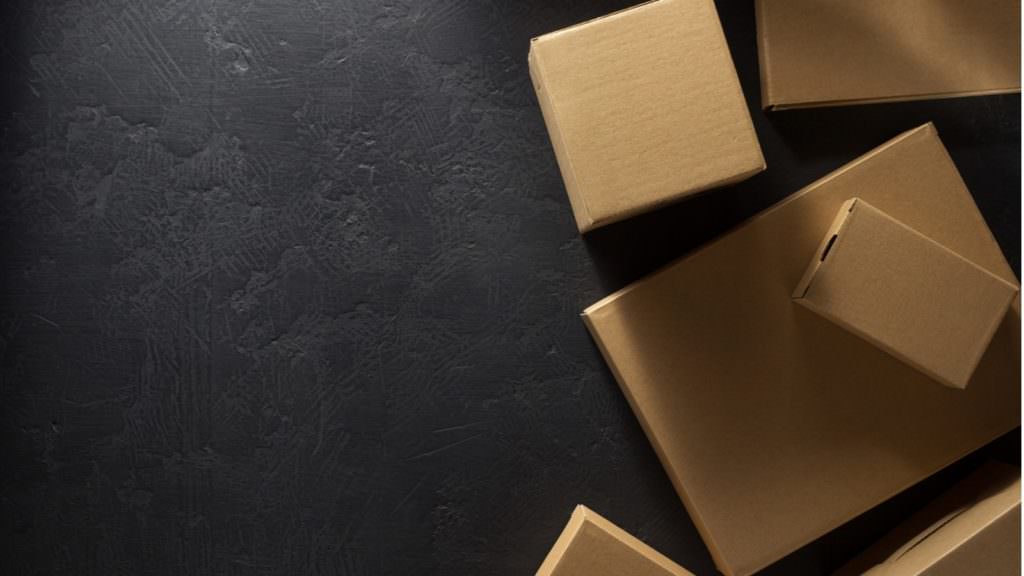Table of Contents
** Minutes
Types of packaging for ecommerce businesses
Printing options for corrugated boxes
Ecommerce packaging is the first impression customers get of your products. The world of packaging is deceptively complex, especially as an ecommerce shop, when considering the different packaging options, you may feel overwhelmed with the selection.
Don’t worry, that’s normal.
We’ve put together a comprehensive list of the main things you need to know about packaging. We’ll cover the different packaging types, the available printing options for each, typical use cases to help you understand which is best for you, and some examples. Here are the packaging types we’ll be covering:
- Corrugated boxes
- Chipboard and paperboard boxes
- Poly bags
But first, check out three common packaging mistakes businesses make.
Avoiding these mistakes and providing a great unboxing experience (and overall customer experience) is key when choosing ecommerce packaging!
Types of packaging for ecommerce businesses
The first step to choosing the right type of packaging for your ecommerce shipping is to understand your options. Each different type of packaging has its pros and cons. Here are the top 11 different types of packaging for ecommerce:
1. Corrugated boxes
This is the typical brown cardboard box that you’re used to seeing. They’re sturdy, can withstand moderate weight, and provide a little bit of cushioning thanks to the corrugated material. They divide into stock boxes (regular cardboard boxes) and specialty boxes.
When it comes to corrugated boxes, there are more choices available than you might initially imagine. Here we’ll go over the different styles of corrugated boxes available, as well as their use cases.
2. RSC: Regular Slotted Containers
 Stock boxes are the industry standard, and come in a wide variety of sizes. If you don’t have any custom needs, then this is a good, economically viable option. If all you need is to transport goods, then this is a good place to start.
Stock boxes are the industry standard, and come in a wide variety of sizes. If you don’t have any custom needs, then this is a good, economically viable option. If all you need is to transport goods, then this is a good place to start.
Also known as RSC or Regular Slotted Containers, these boxes can be recognized by the flaps that are all equal in length, with at least two of the parallel sides meeting in the middle.
Use cases:
- Regular warehousing and storage
- Shipping contents that are not particularly heavy
3. FOL: Full Overlap
 Full overlap boxes are a variation of RSC boxes. The main difference:two of the parallel flaps entirely cover the opening of the box. This provides a maximally secured opening, though it does require additional fasteners (such as packaging tapes).
Full overlap boxes are a variation of RSC boxes. The main difference:two of the parallel flaps entirely cover the opening of the box. This provides a maximally secured opening, though it does require additional fasteners (such as packaging tapes).
These boxes are more sturdy than the standard stock boxes and are less likely to be disfigured while being transported, thanks to the doubly reinforced sides.
 Use cases:
FOL boxes are generally used for situations in which it’s important that the contents of the box stay secure.
Use cases:
FOL boxes are generally used for situations in which it’s important that the contents of the box stay secure.
- Heavy items
- Fragile items
- Longer or more arduous shipping trips
4. Auto-locking bottom
 These boxes are built with a folding mechanism that allows the cardboard flaps to interlock with each other simply by pushing down on them as you open the box. As a result, it provides a quickly-assembled sturdy bottom.
These boxes are built with a folding mechanism that allows the cardboard flaps to interlock with each other simply by pushing down on them as you open the box. As a result, it provides a quickly-assembled sturdy bottom.
This box format offers faster setup time, and also saves on tape expenses. They come particularly in handy when it’s important to quickly and effectively put together a package and ship it out.
Though auto-locking bottom boxes will increase your material costs, they’ll be offset by lower labor costs through an significant hike in productivity.
 Use cases:
Use cases:
- Warehousing and ecommerce fulfillment
- Packaging companies
- Production lines
5. Roll end corrugated boxes
Roll end boxes are also available in corrugated cardboard. They’re characterized by the unique fastening mechanism: rather than open flaps closing in on the top of the box, a hinged piece of cardboard flaps over the opening to be secured into the top or the sides of the box.
Thanks to the minimal overlap, roll end corrugated boxes use materials most efficiently. That makes them ideal for the environmentally conscious.
6. RELF: Roll End Lock Front*
*Best seller!
 The RELF can be recognized by the small flaps that slide into the front of the box to provide the lid with a locking mechanism.
The RELF can be recognized by the small flaps that slide into the front of the box to provide the lid with a locking mechanism.
The lock front offers the most secure closure for a corrugated box without using tape or a sticker. Despite being held or transported in different positions, the box will likely stay shut. This makes it ideal for shipping, as it does not require any additional packaging other than the box itself.
The RELF box, in combination with digital printing, is the most popular choice at Arka. This is thanks to the fact that the box is the the only packaging necessary, thereby allowing the producer to save on shipping materials. In addition, the shape of the box makes for an ideal unboxing experience. When combined with digital printing, the possibilities are endless, as digital printing can be done in any color.
 Use cases:
Use cases:
- Mail deliveries
- Small parts
- Subscription boxes
- Cost-conscious producers
- Environmentally-conscious consumers
7. RETT: Roll End Tuck Top
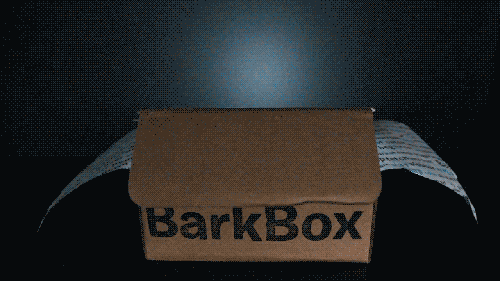 The RETT box features a lid with flaps that tuck into the top of the box. It can either have just the one flap at the front, or additional two flaps on the sides — also know as “dust flaps.”
The RETT box features a lid with flaps that tuck into the top of the box. It can either have just the one flap at the front, or additional two flaps on the sides — also know as “dust flaps.”
This style of box provides a protective layer from all sides, but the fastening is less secure than the Roll End Lock Front model. For that reason, the RETT is not suggested for shipping.
 Use cases:
Use cases:
- Boxes for delivering pizza
- Pastry packaging
- Shelf storage
- Non-shipping deliveries and transportation
- Environmentally-conscious consumers
8. Chipboard and paperboard boxes
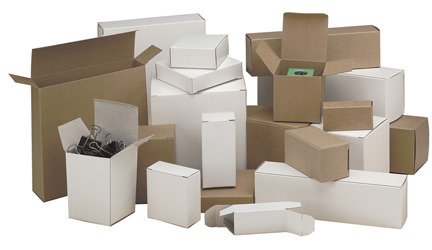 Chipboard and paperboard boxes are made out of a layer of pliable, bending chip cardboard. They’re usually characterized by the lightweight, thin layer of cardboard, though it can come in a variety of thicknesses.
Chipboard and paperboard boxes are made out of a layer of pliable, bending chip cardboard. They’re usually characterized by the lightweight, thin layer of cardboard, though it can come in a variety of thicknesses.
You may be wonder, what’s the difference between chipboard and paperboard?
- Chipboard refers to the kraft (brown, natural) unbleached material
- Paperboard refers to the white materials, which is attained by using Solid Bleach Sulphate (SBS)
When in doubt, paperboard is used as the generic term to describe these bending chip boxes.
Use cases:
- Shelf packaging
- Pharmaceuticals
- Cosmetics packaging
- Shelf storage
- Gift boxing
9. Poly bags
There are some times when the situation calls for bags, such as when shipping objects that aren’t particularly fragile, or when packaging is price-sensitive.
Poly bags (sometimes called poly mailers) get their name from the type of plastic used to make them: polyethylene. They can range from single layer to gusseted poly bags, with a variety of different closures. What they have in common is that they’re lightweight, flexible, and financially friendly.
We’ll go over the different types of bags available, as well as their corresponding printing solutions.
10. Single layer poly bags
Single layer poly bags can function as an enclosure for a product, such as a small pouch for loose products such as powders, beads, jewelry, or tech parts, or a larger bag that encloses a single garment.
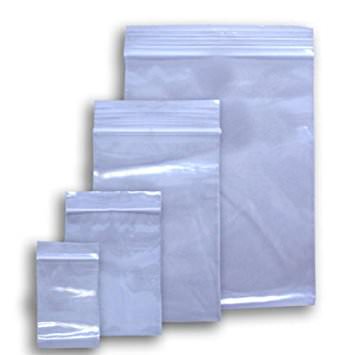
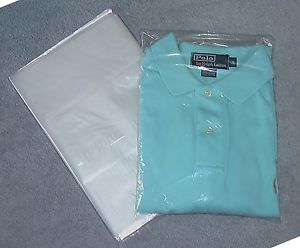 Use cases:
Use cases:
- Containing many small pieces (powders, beads, etc.)
- Individually packaging items within one larger order
- Protecting products from dirt that may enter the box/larger bag
11. Bubble mailers
Bubble mailers tend to have a more durable exterior poly layer and are fitted internally with a layer of bubble wrap. These bags offer more support and protection and are often used for mailing small products.
However, since bubble mailers, are flexible, they shouldn’t be used to mail fragile products of paper-based products that can easily bend.
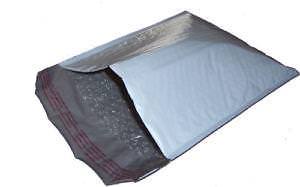 Use cases:
Use cases:
- Mailing small items such as accessories, tech products, etc.
Printing on poly bags
Poly bags are generally not the most conducive to printing. Due to their soft nature, bubble mailers are difficult to print on, and quality can’t be assured.
On regular poly bags, photo-quality prints and vibrant colors are difficult to print. We recommend sticking to simple logos if printing is necessary.
Example of printing on poly bags: When printing on poly bags is absolutely necessary, keeping the packaging design clean and minimal is key. Take a look at this example of dog poop bags by JungeSchachtel, where the design is one solid color, without gradients and other factors to complicate the design.
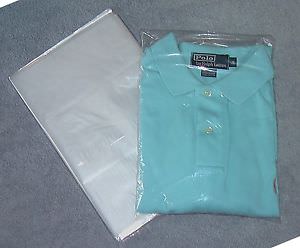 Pro-tip: To brand poly bags while avoiding printing, consider adding branded stickers to the packaging.
Pro-tip: To brand poly bags while avoiding printing, consider adding branded stickers to the packaging.
Printing options for corrugated boxes
Flexo printing
Flexo, or flexographic printing, is a method of stamping a non-photo-quality design onto the material. Flexo works well both with rough and smooth surfaces, making it a common choice for printing on corrugated boxes.
Example of flexo printing on corrugated boxes:
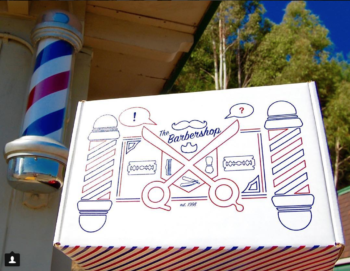 This Barbershop box design works well on all cardboard surfaces and has few colors, making it ideal for flexographic printing.
This Barbershop box design works well on all cardboard surfaces and has few colors, making it ideal for flexographic printing.
Flexo printing is ideal for:
- Large quantities
- Shipping boxes
Digital printing
Digital printing is the process of using a printer to print a design onto the box. A digital printer prints the design line-by-line. Digital printing offers a wide range of color options, making it possible to print virtually any design, including a variety of colors, photo quality, and gradients.
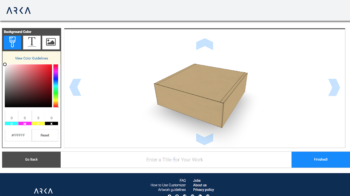 Setup time is the fastest when using digital printing because it doesn’t require setting up and creating dedicated stamps or panels. It is more cost-effective for small quantities because as a digitally printed product, each box is printed one by one.
Setup time is the fastest when using digital printing because it doesn’t require setting up and creating dedicated stamps or panels. It is more cost-effective for small quantities because as a digitally printed product, each box is printed one by one.
Designing your box online is easy with Arka’s Customizer. Anyone can choose the box they want, upload logos, adjust the color, and press buy. Simple as that. You can also save your design if you want to come back and make adjustments.
Example of digital printing on corrugated boxes: This boxed wine features an image of the glass of wine digitally printed onto the cardboard.
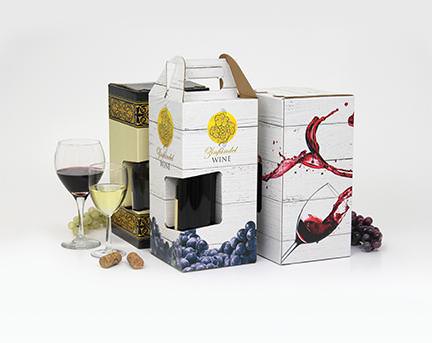 Digital printing is ideal for:
Digital printing is ideal for:
- Small quantities of printing jobs
- Photographic-quality prints
- Vibrant colors
- Quick turnaround
Litho laminated printing
Litho, or lithographic printing, is the method of printing a design onto a layer of paper, and then applying that layer to the cardboard box. This method allows for a wide range of artistic options, including stunning visuals and colors, foil details, embossing, and debossing. The result creates a premium packaging feeling.
Example of litho printing on corrugated boxes: The packaging for this french press perfectly matches the product itself: sleek, minimalist, and with a hint of gold. The gold foil effect on the packaging could have only been made a reality with the help of lithographic printing.
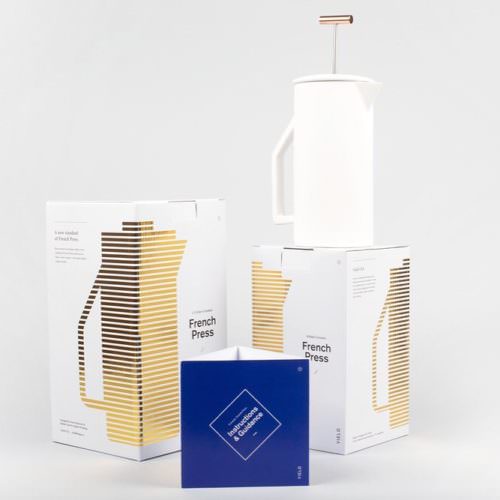 Litho printing is ideal for:
Litho printing is ideal for:
- Large quantities of premium packaging
- Packaging that requires foil details
Printing on chipboard or paperboard
Offset lithography
This method of printing is called “offset”, because it doesn’t apply ink directly to the product. Aluminum plates with the design are inked, then the plates transfer the ink to rubber sheets, which in turn transfer the design onto the box.
Offset printing yields high quality results that are consistently accurate, as they use the same aluminum plates.
Examples of offset lithography printing on paperboard boxes: You can see examples of offset lithography on the brown paperboard Arka products. Offset lithography is easily applied for clean and precise results.
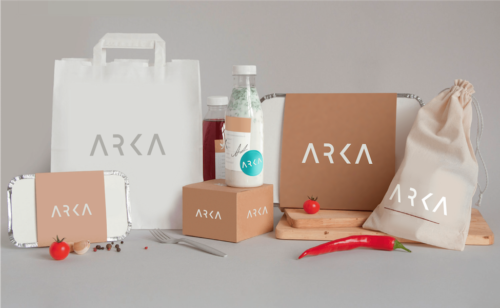 Offset printing is ideal for:
Offset printing is ideal for:
- Large volume prints
- Visuals that require only a few colors
Direct digital printing
Just like with corrugated boxes, direct digital printing prints directly onto the paperboard. It provides sharp images that are compatible with photo-quality demands.
Since digital printing requires little setup (and only a digital print file), setup is quick and inexpensive. However, since each box is printed individually, it may not be the most cost-effective for large runs.
Example of direct digital printing on paperboard boxes:
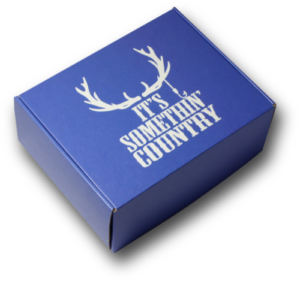 Direct digital printing is ideal for:
Direct digital printing is ideal for:
- Small batches
- Photo-quality demands
- Quick turnover
Conclusion
All things said and done, there are many types of packaging to choose from. Your choice depends on a variety of factors: what the box will be used for, budget, environmental factors, design requirements and color amounts, and any product restrictions.
All you have to do is decide which is best for your business.
Sound easier said than done?
No worries — contact Arka for a free consultation. Let us know what your requirements are, and we’ll help you put together the best packaging solution for your product. We can help you save money, reduce waste, and create the best design for your brand.
Learn more
Learn more about marketing to your audience in ways that will actually get them to place an order on your store — and turn them into repeat buyers. Download “The Ecommerce Guide to Getting (and Keeping) Customers.”
Or, if you need help fulfilling and shipping your custom branded boxes and orders, get in touch with ShipBob to see if we can help. ShipBob can help you take the unboxing experience to the next level with additional services, including the ability to add a personal gift note (you can even let your customers add a custom gift note at checkout if they are sending a present to someone special).
Request a fulfillment pricing quote below.
